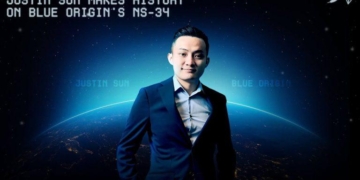
Mark Zuckerberg is on a warpath to recruit top talent in the AI field for his newly formed Meta Superintelligence Labs. After trying to gut OpenAI (and successfully poaching several top researchers), he appears to have set his sights on his next target.
More than a dozen people at Mira Murati’s 50-person startup, Thinking Machines Lab, have been approached or received offers from the tech giant. (Murati, for those who don’t remember, was previously the chief technology officer at OpenAI.) One of those offers was more than $1 billion over a multi-year span, a source with knowledge of the negotiations tells WIRED. The rest were between $200 million and $500 million over a four-year span, multiple sources confirm. In the first year alone, some staffers were guaranteed to make between $50 million and $100 million, sources say (a spokesperson for the lab declined to comment).
So far at Thinking Machines Lab, not a single person has taken the offer.
Meta communications director Andy Stone disputed this reporting in a statement to WIRED. “We made offers only to a handful of people at TML and while there was one sizable offer, the details are off,” he said. “At the end of the day, this all begs the question who is spinning this narrative and why.”
Zuckerberg’s initial outreach is low-key, according to messages viewed by WIRED. In some cases, he sent recruits a direct message on WhatsApp asking to talk. From there, the interviews move fast—a long call with the CEO himself, followed by conversations with chief technology officer Andrew “Boz” Bosworth and other Meta executives.
Here’s a pre–Meta Superintelligence Labs recruiting message Zuckerberg sent to a potential recruit (the tone hasn’t changed much today):
“We’ve been following your work on advancing technology and the benefits of AI for everyone over the years. We’re making some important investments across research, products and our infrastructure in order to build the most valuable AI products and services for people. We’re optimistic that everyone who uses our services will have a world-class AI assistant to help get things done, every creator will have an AI their community can engage with, every business will have an AI their customers can interact with to buy things and get support, and every developer will have a state-of-the-art open source model to build with. We want to bring the best people to Meta, and we would love to share more about what we are building.”
During these conversations, Boz has been upfront about his vision for how Meta will compete with OpenAI. While the tech giant has lagged behind its smaller competitor in building cutting-edge models, it is willing to use its open source strategy to undercut OpenAI, sources say. The idea is that Meta can commoditize the technology by releasing open source models that directly compete with the ChatGPT maker.
“The pressure has always been there since the start of this year, and I think we saw that culminate with Llama 4 being rushed out of the door,” a source at Meta tells me. The rollout of Meta’s latest family of models was delayed due to struggles improving its performance, and once it was released, there was a lot of drama about the company appearing to game a benchmark to make other models appear better than they actually were.
So why weren’t the flashy tactics deployed by Meta successful in recruiting TML’s A-listers? Ever since Zuckerberg tapped Scale AI cofounder Alexandr Wang to colead the new lab (along with former GitHub CEO Nat Friedman), sources have been pinging me with gossip about Wang’s leadership style and concerns about his relative lack of experience. Not everyone is keen to work for Wang, I’m told—though it hasn’t yet stopped Zuckerberg from recruiting nearly two dozen for the lab so far (Altman said that Meta didn’t get its “top people” and “had to go quite far down their list” at OpenAI).
Other sources I spoke with say they weren’t inspired by the product roadmap at Meta—money can be made anywhere, but creating what some sources see as AI slop for Reels and Facebook isn’t particularly compelling. At OpenAI and Anthropic, you’ll still get gobs of money, and the missions center around more lofty goals like building artificial general intelligence that “benefits all of humanity.” Sources I spoke with who went through the interview process with Meta said it’s become a way to test one’s market value in the AI industry.
It’s not like TML is short on cash, either. The startup’s latest funding round—the largest seed round in history!—suggests researchers who stay don’t have to choose between being a missionary or a mercenary. The one-year-old startup is already valued at $12 billion, and it hasn’t even released a product yet. Por qué no los dos, as they say.
Reporting this column, I spoke to sources across most of the major AI labs to ask: Are you bullish or bearish on MSL? Rarely did I get a diplomatic “it’s too early to tell.” Instead, I heard a lot of chatter about big egos and a perceived lack of coherent strategy. For my part, and I’m not just trying to be diplomatic, I actually do think it’s too early to tell. I mean, they say you can’t buy taste, but that’s sort of Zuckerberg’s whole schtick. Now that the team officially costs Meta billions of dollars, the pressure is on to turn this recruiting sprint into a successful lab.
So far, I’m told, everyone at MSL reports to Wang, and a proper org chart hasn’t been finalized. Once that structure is defined, we’ll be able to figure out a bit more about what the lab hopes to become—as long as Meta can hang onto its buzzy new hires.
Update 7/29/25 12:20pm ET: This story has been updated with comment from Meta.














